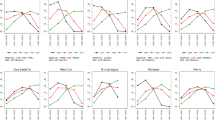Abstract
This paper analyzes the interaction between the distributionof human capital, technological progress, and economic growth.It argues that the composition of human capital is an importantfactor in the determination of the pattern of economic development.The study demonstrates that the evolutionary pattern of the humancapital distribution, the income distribution, and economic growthare determined simultaneously by the interplay between a local home environment externality and a global technologicalexternality. In early stages of development the local home environmentexternality is the dominating factor and hence the distributionof income becomes polarized; whereas in mature stages of developmentthe global technological externality dominates and the distributionof income ultimately contracts. Polarization, in early stagesof development may be a necessary ingredient for future economicgrowth. An economy that prematurely implements a policy designedto enhance equality may be trapped at a low stage of development.An underdeveloped economy, which values equality as well as prosperity,may confront a trade-off between equality in the short-run followedby equality and stagnation in the long-run, and inequality inthe short-run followed by equality and prosperity in the longrun.
Similar content being viewed by others
References
Azariadis, C. (1996). “The Economics of Development Traps,” Journal of Economic Growth1, 449–485.
Azariadis, C., and A. Drazen. (1990). “Threshold Externalities in Economic Development,” Quarterly Journal of Economics105, 501–526.
Barro, R. J. (1974). “Are Government Bonds Net Wealth?” Journal of Political Economy82, 1095–1117.
Barro, R. J. (1991). “Economic Growth in a Cross Section of Countries,” Quarterly Journal of Economics106, 407–444.
Bartel, A. N., and F. R. Lichtenberg. (1987). “The Comparative Advantage of Educated Workers in Implementing New Technologies,” Review of Economics and Statistics69, 1–11.
Berman, E., J. Bound, and Z. Griliches. (1994). “Changes in the Demand for Skilled Labor within U.S. Manufacturing: Evidence from the Annual Survey of Manufacturers,” Quarterly Journal of Economics109, 367–398.
Becker, G. S., and N. Tomes. (1986). “Human Capital and the Rise and Fall of Families,” Journal of Labor Economics4, S1–S39.
Benabou, R. (1996). “Equity and Efficiency in Human Capital Investment,” Review of Economic Studies63, 237–264.
Case, A. C., and L. F. Katz. (1991). “The Company You Keep: The Effect of Family and Neighborhood on Disadvantaged Youths,” Working Paper No. 3705, NBER.
Coleman, J. S., et al. (1966). Equality of Educational Opportunity. Washington, D.C.: US. GPO.
David, P. A. (1990). “The Dynamo and the Computer: An Historical Perspective on the Modern Productivity Paradox,” American Economic Association Papers and Proceedings80, 355–361.
Durlauf, N. S. (1993). “Neighborhood Feedback, Endogenous Stratification, and Income Inequality,” University of Wisconsin.
Durlauf, N. S. (1996). “A Theory of Persistent Income Inequality,” Journal of Economic Growth1, 75–94.
Galor, O., and H. E. Ryder. (1989). “Existence, Uniqueness and Stability of Equilibrium in an Overlapping-Generations Model with Productive Capital,” Journal of Economic Theory49, 360–375.
Galor, O. (1996). “Convergence? Inferences from Theoretical Models,” Economic Journal, 106, 1056–1069.
Galor, O., and D. Tsiddon. (1996). “Technological Progress, Mobility, and Economic Growth,” American Economic Review(forthcoming).
Galor, O., and J. Zeira. (1993). “Income Distribution and Macroeconomics,” Review of Economic Studies60, 35–52.
Goldin, C., and R. A. Margo. (1992). “The Great Compression: The Wage Structure in the United States at Mid-Century,” Quarterly Journal of Economics107, 1–34.
Hanushek, E. A. (1986). “The Economics of Schooling: Production and Efficiency in the Public Schools,” Journal of Economic Literature24, 1141–1177.
Iyigun, M., and A. Owen. (1996). “Alternatives in Human Capital Accumulation: Implications for Economic Growth,” Discussion Paper No. 550, Board of Governors, DC.
Jovanovic, B., and Y. Nyarko. (1996). “Learning by Doing and the Choice of Technology,” Econometrica, November.
Katz, L. F., and Murphy, K. M. (1992). “Changes in Relative Wages, 1963–1986: Supply and Demand Factors,” Quarterly Journal of Economics107, 35–78.
Krueger, A. B. (1993). “How Computers Have Changed the Wage Structure: Evidence from Microdata, 1984–1989,” Quarterly Journal of Economics108, 33–60.
Kuznets, S. (1955). “Economic Growth and Income Inequality,” American Economic Review45, 1–28.
Lucas, R. E., Jr. (1988). “On the Mechanics of Economic Development,” Journal of Monetary Economics22, 3–42.
Mankiw, N., D. Romer, and D. N. Weil. (1992). “A Contribution to the Empirics of Economic Growth,” Quarterly Journal of Economics107, 407–437.
Mincer, J. (1996). “Economic Development, Growth of Human Capital, and the Dynamics of theWage Structure,” Journal of Economic Growth1, 29–49.
Mountford, A. (1996). “Human Capital, the Brain Drain and Economic Growth,” Journal of Development Economics (forthcoming).
Perotti, R. (1993). “Political Equilibrium, Income Distribution, and Growth,” Review of Economic Studies60, 755–776.
Perotti, R. (1996). “Income Distribution and Economic Growth: What the Data Says,” Journal of Economic Growth, 1, 149–187.
Schultz, T. W. (1975). “The Value of the Ability to Deal with Disequilibria,” Journal of Economic Literature13, 827–846.
Tamura, R. (1996). “From Decay to Growth: A Demographic Transition to Economic Growth,” Journal of Economic Dynamics and Control(forthcoming).
Yaari, M. (1965). “Uncertain Lifetime, Life Insurance, and the Theory of the Consumer,” Review of Economic Studies32, 137–150.
Author information
Authors and Affiliations
Rights and permissions
About this article
Cite this article
Galor, O., Tsiddon, D. The Distribution of Human Capital and Economic Growth. Journal of Economic Growth 2, 93–124 (1997). https://doi.org/10.1023/A:1009785714248
Issue Date:
DOI: https://doi.org/10.1023/A:1009785714248




